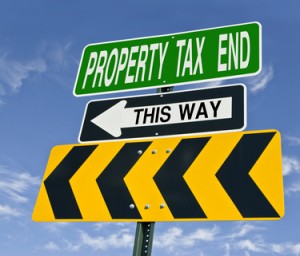 Have you ever been a tax defaulter? Did you ever have to face Internal Revenue Service (IRS) because of tax debts? If you haven’t been in a situation like that, consider yourself lucky.
Have you ever been a tax defaulter? Did you ever have to face Internal Revenue Service (IRS) because of tax debts? If you haven’t been in a situation like that, consider yourself lucky.
However if you’ve not faced such situations earlier, there are few terms related to tax debts implied by the IRS that you should be aware of. This will help you protect your property from getting seized against the owed taxes.
Tax Lien and Tax Levy are the two terms that you need to know about.
Tax Lien
Tax Lien is an IRS claim against the property and assets of the tax debtor. A notice of tax lien is filed in the tax defaulters’ county’s public record systems. As a result, it gives IRS an authority against tax defaulters and their creditors. However, it provides a chance to the taxpayer to clear the tax debts and claim back the assets.
Occurrence of Tax Lien
One – The first thing IRS does is assesses the tax of an individual and sends him/her a notice for the payment of tax. Apparently, until a notice is served first, IRS doesn’t take any further action.
Two – Ten days after a notice is served to the taxpayer, and the tax debt is not cleared, the IRS files a Federal Tax Line in public records. In this, it notifies all the taxpayer and their creditors that they have a legal claim against all the properties and assets owned by him/her.
This includes property bought by the tax defaulter even after the lien was filed.
Soon after a tax lien is filed, the tax defaulter is bound to clear the tax dues at the earliest within the stipulated time period. If the taxpayer fails to do so, then further steps are taken by the IRS.
Tax Levy
Tax Levy is seizure of the assets until the unpaid tax bills are cleared. In this, the federal tax authorities have the right to sell the property and assets if the debt is unpaid. Assets include retirement accounts, saving account, brokerage account, and account receivable in case of a business enterprise.
And the worst paid of this is, a person might not even receive an advanced notice from the IRS.
Occurrence of Tax Levy
One – IRS sends the first notice for payment of default tax to the tax payer.
Two – Tax defaulter neglects the notice and doesn’t pay tax or a part of tax debt as directed by the Internal Revenue Service.
Third – IRS sends final notice of intent that gives tax defaulters a right to a hearing at least 30 days prior to the levy.
Four – IRS seizes the property i.e. house and cars, and other assets and sells it in open auction. With the sale revenues the tax claim are clear first and the remaining amount is refunded if there are no other big claims on the property such as the mortgagee.
There are few ways that the IRS may levy. Such as Federal Payment Levy Program, The State Income Tax Levy Program, Non-Federal Payment Levy Program (manual levy program).
Federal Payment Levy Program (FPLP)
Federal Payment Levy Program (FPLP) is one of many ways to collect unpaid taxes. Levy is often done on social-security benefits received by the low-income and disabled individuals.
The Internal Revenue Service (IRS) goes through the database of tax defaulters, check if they’re entitled to any social-security benefits and then send them a notice with regard to tax due.
However, the IRS won’t include benefits such as children’s benefits, Supplementary Security Income (SSI) payments, or death benefits.
The State Income Tax Levy Program (SITLP)
In this method, the IRS levy an individual’s state tax refund to pay off the federal tax dues. When SITLP program is implemented in case of any federal tax default, both the state and IRS sends notice to the federal tax defaulter. After receiving the notice, a person can appeal against it and request for a right to a hearing.
Non-Federal Payment Levy Program
Also known as Manual Levy Program, it is a method in which the IRS levies 100% of tax payer’s income every month. This is the strictest way of tax levy and is implemented only when the tax payer is totally uncooperative and unresponsive. In the year 2011, the tax levy was up to $791.67 per month.
Important points related to Tax Lien and Tax Levy is discussed above. Also discussed are different ways of Tax Levy used by the IRS to recover the tax debts from taxpayers. Hope this information helps you avoid tax lien and tax levy and protect your property and other assets.
